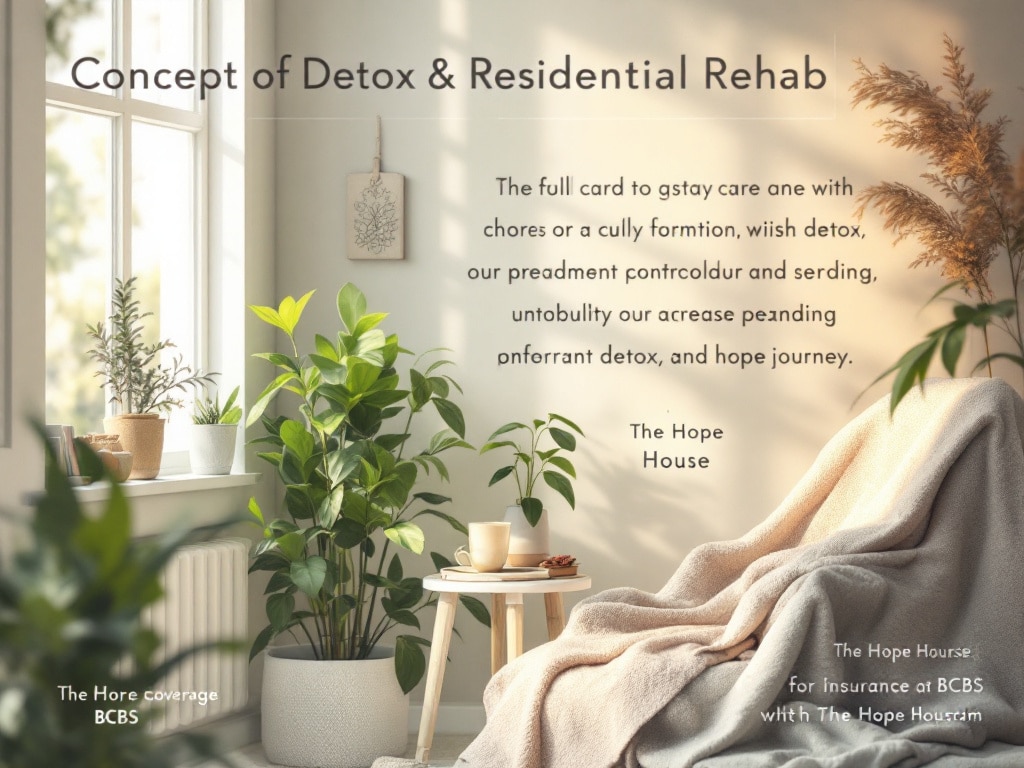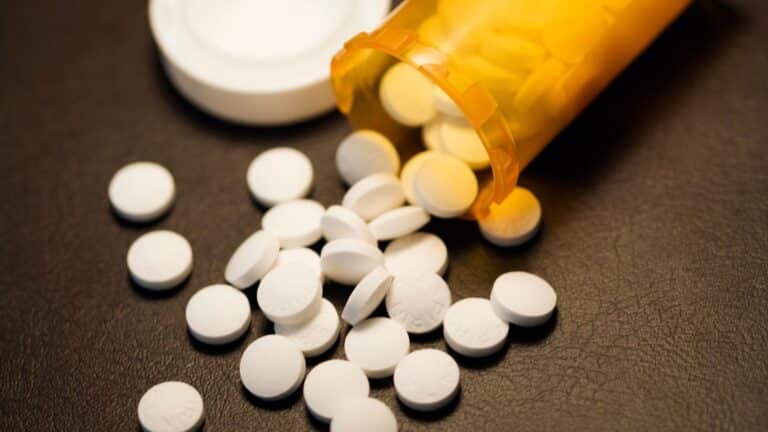If you are considering a fentanyl detox residential program with BCBS, you likely have questions about coverage, daily life on the unit, expected costs, and the transition to ongoing care. At The Hope House, we guide you through each step of the process so that you can focus on healing rather than logistics. As a member of Blue Cross Blue Shield, you tap into one of the largest in-network detox and residential programs across the nation, helping to reduce out-of-pocket expenses and ensuring access to expert care [1].
Our in-network drug detox program covered by bcbs is designed to address the unique challenges of fentanyl withdrawal under medical supervision. Below we outline what you can expect from admission through discharge, and how BCBS benefits apply every step of the way.
Understanding residential fentanyl detox
What is residential detox
Residential detox is a medically supervised program in which you stay onsite at a facility like The Hope House to safely manage withdrawal from substances such as fentanyl. This level of care includes 24-hour nursing support, access to physicians, and structured programming to address both physical and psychological symptoms. Unlike outpatient detox, the residential setting removes everyday triggers and distractions, helping you concentrate fully on recovery.
Benefits of inpatient detox
Inpatient detox offers several advantages when facing fentanyl withdrawal:
- Continuous medical monitoring to minimize risks
- Access to medication-assisted treatment for cravings and discomfort
- Structured daily schedule with therapy, wellness activities, and peer support
- Safe environment that limits exposure to substances
- Immediate response to any medical or emotional crises
These benefits contribute to higher success rates and a smoother transition into ongoing treatment.
Role of BCBS coverage
Blue Cross Blue Shield typically covers residential detox services as part of its addiction treatment benefits, although specific coverage details depend on your plan and state regulations. BCBS plans generally include:
| Service | BCBS coverage |
|---|---|
| Medical detox supervision | Covered after deductible |
| Residential inpatient program | Covered up to plan limits |
| Medication-assisted treatment (MAT) | Covered under pharmacy benefits |
| Partial hospitalization program (PHP) | Covered at in-network facilities |
| Intensive outpatient program (IOP) | Covered at in-network facilities |
Coverage for copays, coinsurance, and deductibles varies by plan, but pre-authorization and in-network treatment can help you maximize benefits and minimize out-of-pocket costs.
Preparing for admission
Insurance verification
Before admission, you or your loved one will work with our admissions team to confirm BCBS benefits. This process typically involves:
- Calling the number on the back of your BCBS card
- Verifying in-network residential detox benefits and plan limits
- Obtaining any required pre-authorization or referral
- Clarifying copay, deductible, and coinsurance amounts
Having this information in hand helps to prevent unexpected bills and ensures a smoother intake process.
Pre-admission assessment
Once insurance is verified, you will complete a clinical assessment to evaluate your medical history, mental health status, and treatment goals. This assessment usually includes:
- Review of substance use history and prior treatment attempts
- Physical examination and vital signs
- Mental health screening for co-occurring disorders
- Discussion of personal preferences or special needs
The Hope House team uses this information to create an individualized treatment plan tailored to your unique circumstances.
What to pack
Packing for a residential stay requires planning. Bring only essential items:
- BCBS insurance card and photo ID
- Comfortable clothing and sleepwear
- Toiletries (toothbrush, deodorant, shampoo)
- Any prescribed medications in original containers
- Reading materials or journals
- Optional small personal items (photos, comfort objects)
Leave valuables, weapons, and nonessential electronics at home. Our goal is to provide a safe, distraction-free environment.
What to expect during detox
Medical monitoring and care
During the first 3 to 7 days of your stay, the medical team monitors your withdrawal symptoms and vital signs around the clock. This includes:
- Regular checks of heart rate, blood pressure, and temperature
- Hydration support with IV fluids if needed
- Management of acute symptoms like nausea, aches, and insomnia
- Adjustments to your medication regimen
Close monitoring reduces risks and helps you stay as comfortable as possible.
Medication-assisted treatment
Medication-assisted treatment (MAT) is a cornerstone of fentanyl detox. At The Hope House, we use FDA-approved medications such as Suboxone to:
- Alleviate withdrawal symptoms
- Reduce cravings
- Stabilize brain chemistry
A recent study at UCSF found that only 34 percent of fentanyl users reached a full buprenorphine dose through low-dose initiation, highlighting the need for personalized protocols and medical expertise [2].
Therapy and support groups
Detox is more than physical care. Early therapy and group support lay the groundwork for lasting recovery. You will engage in:
- Individual counseling to address emotional challenges
- Group therapy to share experiences and coping strategies
- Psychoeducation on relapse prevention
- Holistic activities like yoga, meditation, or art therapy
This combination of clinical and peer support fosters resilience and hope.
Transitioning to ongoing care
Partial hospitalization program
After detox, you may move into a partial hospitalization program (PHP) if you need structured care with more flexibility. PHP typically involves:
- 20 hours per week of clinical services
- Continued MAT and medical oversight
- A customized schedule of individual and group therapy
- Skills training for stress management and relapse prevention
This step bridges the gap between inpatient support and daily life.
Intensive outpatient program
An intensive outpatient program (IOP) offers further autonomy with continued support. In IOP you can expect:
- 9 to 12 hours per week of therapy and group sessions
- Regular check-ins with medical and counseling staff
- Integration of family therapy or support network involvement
- Focus on vocational or educational reintegration
Many patients find IOP a stress-tested environment to apply new coping skills.
Outpatient and aftercare
Long-term recovery relies on ongoing engagement with support systems. Outpatient care and aftercare may include:
- Weekly individual therapy sessions
- Alumni groups and peer-recovery meetings
- 12-step or other self-help group participation
- Access to telehealth check-ins
- Family education programs
Studies show that patients who remain abstinent for 2 years have about a 90 percent chance of staying sober at 10 years [3]. Leveraging aftercare resources is key to maintaining progress.
How BCBS reduces costs
Coverage for detox services
As a BCBS member, you benefit from in-network pricing, negotiated rates, and lower copays. Coverage typically includes:
- Medical evaluation and detox supervision
- Medication-assisted treatment
- Group and individual therapy
- Follow-up planning for ongoing care
Always confirm specific benefits and limits with BCBS prior to admission to avoid unexpected expenses.
Out-of-pocket cost estimation
Here are common cost factors:
- Deductible: Amount you pay before benefits kick in
- Coinsurance: Percentage of costs you share after deductible
- Copay: Fixed fee per visit or service
- Out-of-pocket maximum: The cap on annual spending
Example cost estimate for a 7-day stay might look like this:
| Cost component | Estimated amount |
|---|---|
| Deductible | $500 – $2,000 |
| Coinsurance (20%) | $300 – $1,000 |
| Copay per service | $25 – $75 |
| Total out-of-pocket | $825 – $3,075 |
Exact figures depend on your plan details and prior payments made toward your deductible.
Maximizing benefits
To make the most of BCBS coverage:
- Use The Hope House, an in-network provider
- Obtain pre-authorization for residential detox
- Submit claims promptly with correct billing codes
- Appeal denials with clinical documentation
- Track your claims and remaining benefits online
Proper coordination with your insurance and our billing specialists helps ensure smooth coverage.
Why choose The Hope House
Expertise in fentanyl detox
At The Hope House, our multidisciplinary team has extensive experience treating opioid use disorder, including complex fentanyl dependencies. You receive care from:
- Board-certified physicians and psychiatrists
- Registered nurses trained in withdrawal management
- Certified addiction counselors with specialized training
- Case managers coordinating every aspect of your treatment
We tailor protocols based on the latest evidence to promote safe, effective detox.
Comprehensive treatment continuum
Beyond residential detox, we offer a full spectrum of services covered by BCBS and other leading insurers, including Aetna, Cigna, Tricare, Humana, and UMR:
- Partial hospitalization program (PHP)
- Intensive outpatient program (IOP)
- Outpatient therapy and group support
- Medication-assisted treatment with Suboxone
- Family therapy and educational workshops
This continuum allows you to transition seamlessly through levels of care while staying in-network and maintaining benefits.
Supportive recovery environment
Recovery thrives in an environment that balances structure with compassion. The Hope House provides:
- Comfortable private or semi-private rooms
- Nutritious meals designed for recovery
- Wellness activities like mindfulness meditation and yoga
- Onsite fitness and recreational options
- Peer support groups fostering camaraderie
Our goal is to create a space where you feel safe, understood, and empowered to change.
Next steps and resources
Contact and admission process
When you are ready to begin, simply call our admissions team 24 hours a day, 7 days a week. We will:
- Verify your BCBS benefits
- Schedule a clinical assessment
- Coordinate transportation or travel details if needed
- Confirm your admission date and prepare for check-in
Financial assistance options
If you face financial obstacles, we offer:
- Sliding scale fees based on income
- Payment plans for deductibles and coinsurance
- Scholarships and hardship funds
- Guidance on appealing insurance denials
Our financial counselors work with you to minimize stress around treatment costs.
Additional resources
For further support, consider these resources:
- SAMHSA national helpline, available 24/7 at 1-800-662-HELP [4]
- National Institute on Drug Abuse information on opioid detox
- Aftercare groups and community-based recovery organizations
Taking action now can change the trajectory of your recovery journey. You are not alone, and The Hope House is here to support you every step of the way.







